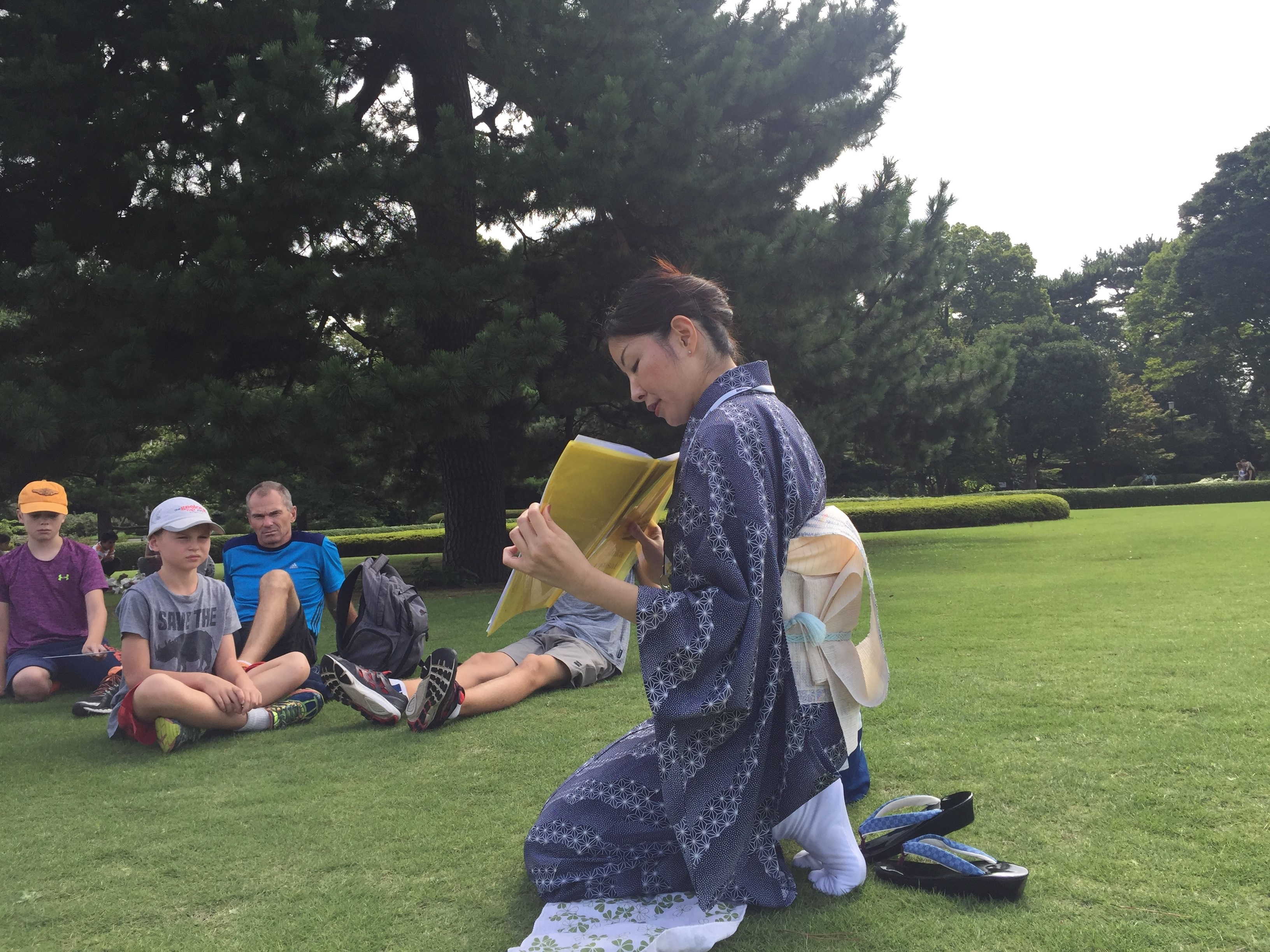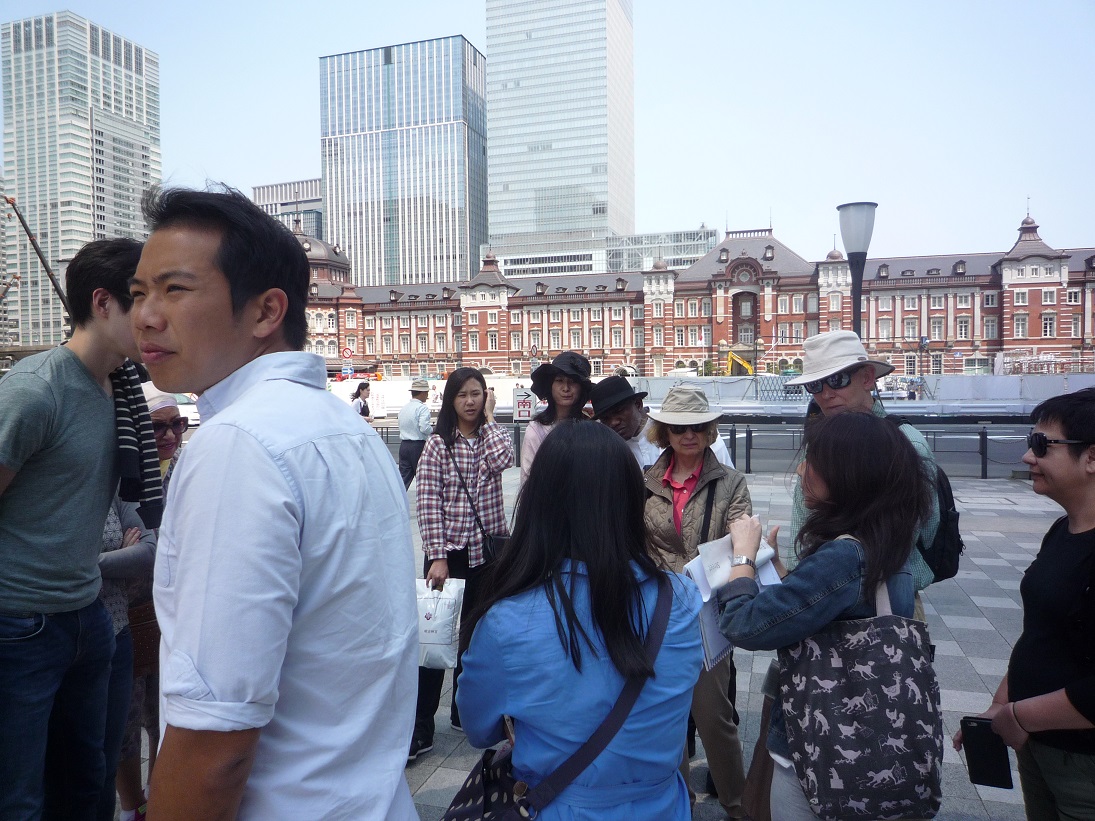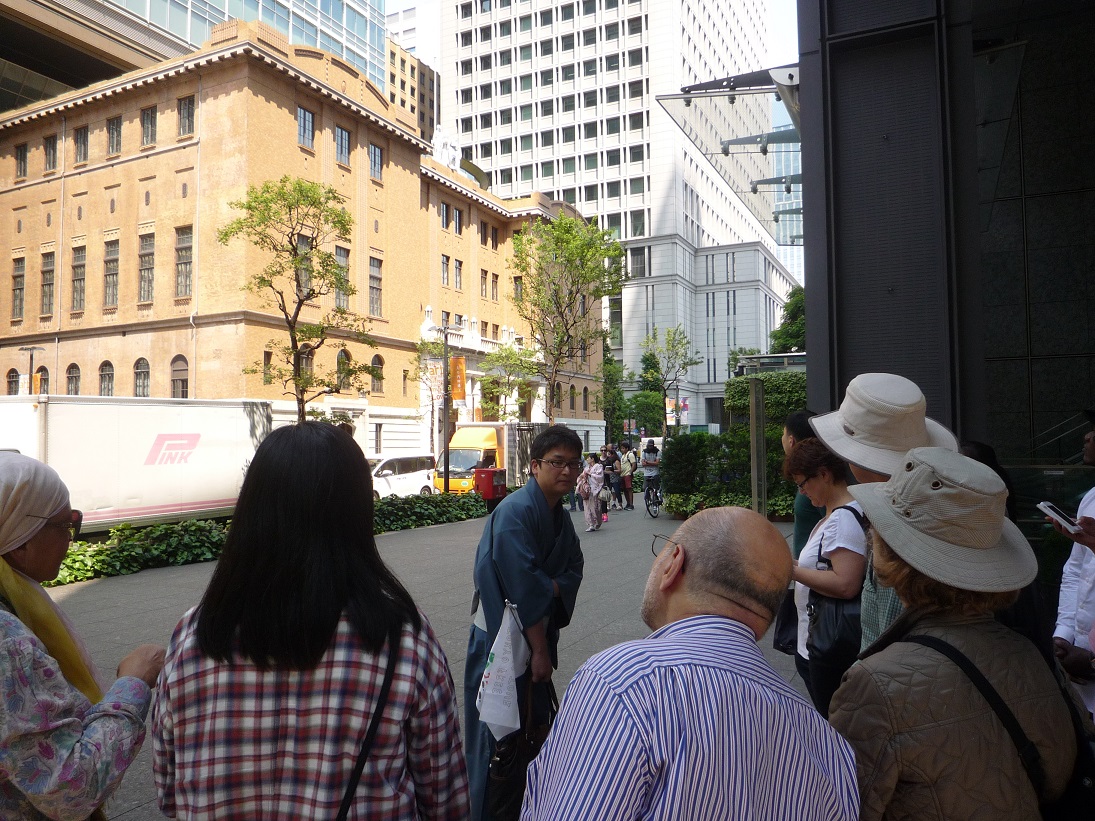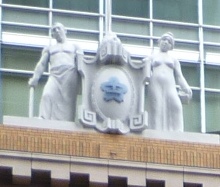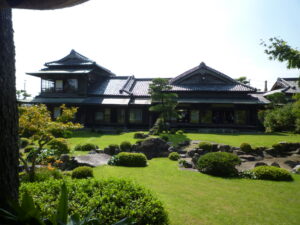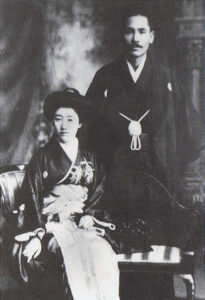Thank you for joining us from all over the world.
On that day we welcomed over 60 people from USA, Australia, U.K., Canada, Spain, Columbia, Israel, Chile, Poland, Malaysia, Germany, Singapore, India, Egypt and Hong Kong.
We divided into 7 groups.
The weather was really nice and very warm despite the middle of May.
In this tour, most of the spots the guides describe is things of pre-modern time. But the first two spots are related to early modern time buildings. One is Tokyo Station where we first meet and the other is The Industry Club of Japan. These two buildings were built in early 20th century, that symbolises Japan’s early age of modernization from feudal era.
For European guests it is not special at all because such things can be found all over in their countries. As for The Industry Club of Japan opened in 1920 for forum of industriasts, the feature of this retroprospective building is it is combined with new modern high-rise building. Initially it was only 5 story building but in early 21th century, some portion of the building was demolished and replaced with the new building. The glass window building and the old brick building were combined inside. It is called facade architect. Only the symbolic side of the building was remained to preserve cultural heritage while expanding office space for rent. One might see it weird.
The significance of this preservation is to tell how Japan industrialised the nation. On the top of the old building is two statues.
A man holding a hammer symbolises coal mining industry and a woman holding a spinning wheel symbolizes textile industry. The two were the major industries at that time.
There are dramatic stories being told about these industries. As for textile industry, there were sad stories of young women working at textile factories. They were forced to work more than 12 hours a day. The textile they produced were not only used for kimono but stocking western women used. Big export products for Japan. They worked so hard that some of them ended up dying of tuberculosis in harsh environment.
As for coal mining, there is a famous love affair being told among Japanese. The story is similar to Hollywood film “Titanic.” In Fukuoka prefecture, there remained a coal mining tycoon residence, Ito Denuemon House currently as public exhibition. A georgeous traditional Japanese mansion reveals how rich the house owner was.
Ito was self-made coal mining tycoon. Coal was necessary materials in those days because it was major energy source to run ships for war and trading and to generate electricity. In 1911, he married a noble woman, Byakuren when he was 50 years old and she was 25 years old. Byakuren was married to him to save her family that was financially in trouble.
But she was never happy living with Ito although he showered her with expensive kimono and jewelries. Later she fell in love with a young man and ran away from Ito. Her letter to tell the will of divorce was printed in newspaper, which was very sensational at that time because wives’ adultery was illegal while Ito could openly had mistresses. The couple were at risk of prison sentence. But Ito was kind enough to let her go without prosecution.
Byakuren gave up her noble status because of that incident and then the couple got married and had children. She was good at writing poems and became a well-known poet since then. Today under new democratic constitution, nobility is abolished and wives’ adultery is no longer illegal.
By learning such stories, this building should look more interesting spot for our guests. The buildings we escort are not just for viewing but learning hidden stories with them.
We are always eager to tell such stories to the guests. Please come and join us!
We have a regular tour every Saturday and have weekday/Sunday tours irregularly.Please check the calendar on our website, Facebook and TripAdvisor.

